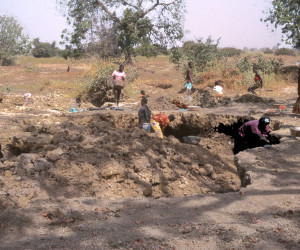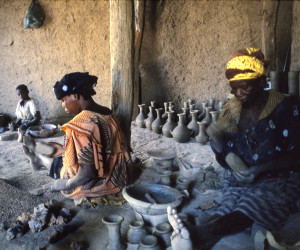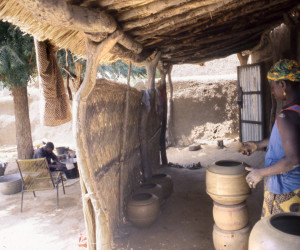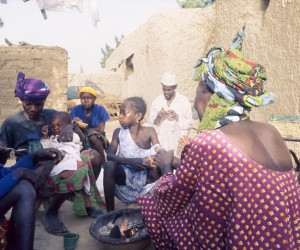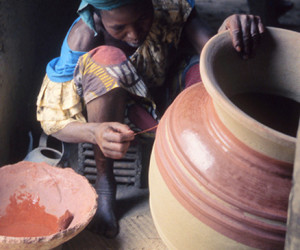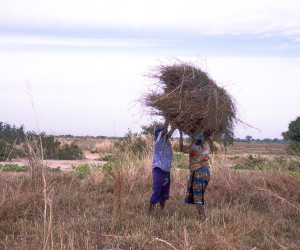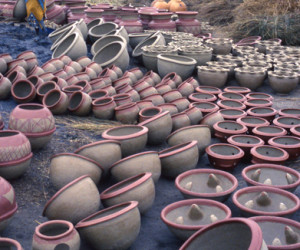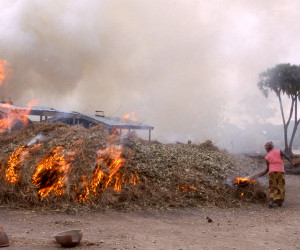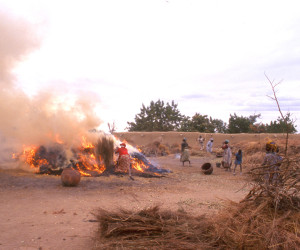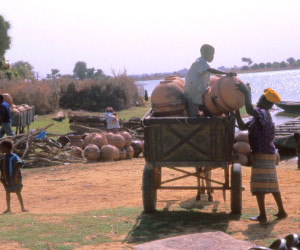
Clay Mine ||| On Tuesdays and Wednesdays, the clay mine is full of women and daughters extracting the clay from the earth. The women say that the location of the village is due to the superior quality of the clay deposit found in this spot.
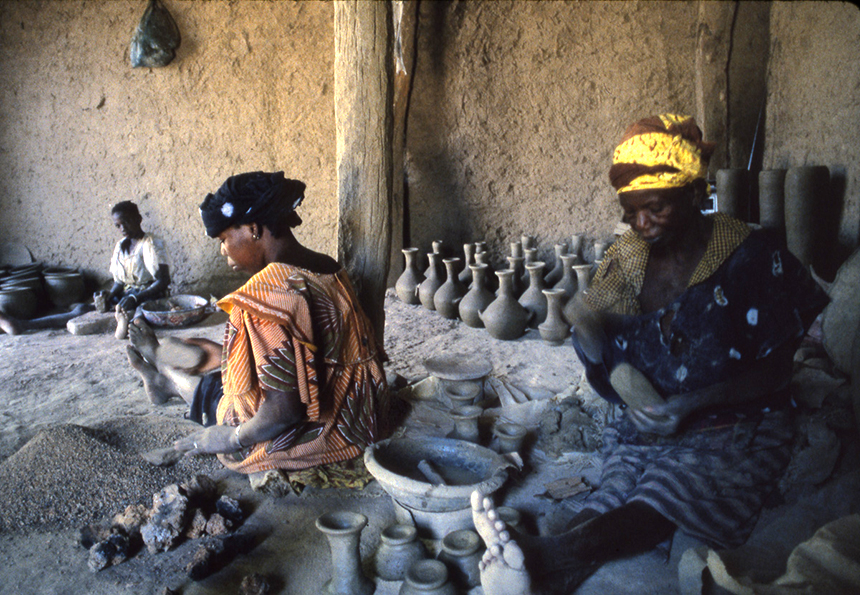
Kadia’s Family ||| Women work in the vestibules of their compounds. Here three generations of a family work side-by-side. The woman in the yellow head wrap is making the long neck for the pots behind her. The other two are making the grog (small pebble sized pieces of fired clay) that is mixed into the clay body to help it withstand thermal shock.
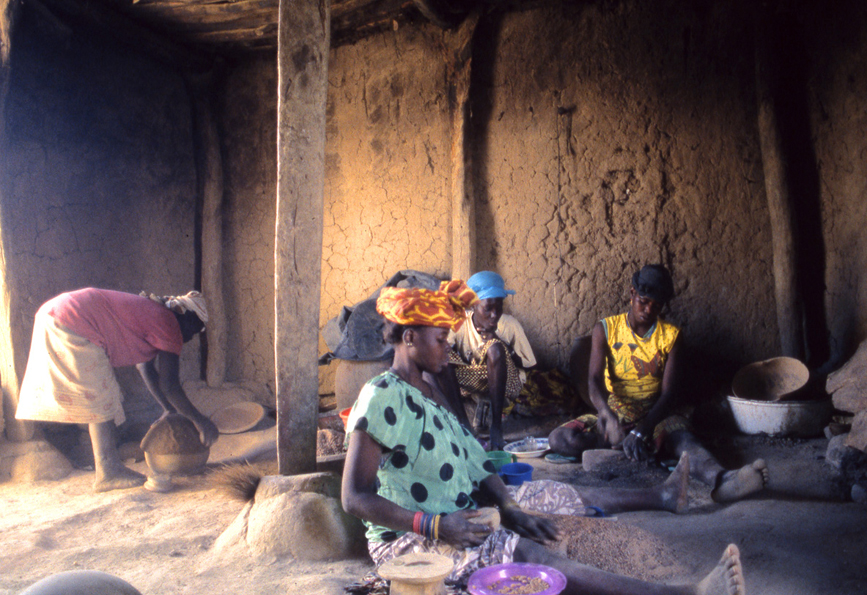
Wasa’s Family ||| The woman in the pink shirt is beginning to make a pot by forming a slab over a mold. The other women are making grog. The purple plate contains peanuts for snacking. Next to the woman in yellow is a plate with glasses for making tea. Behind the woman with the blue head tie, is a clay jar covered with black plastic that contains wet clay .
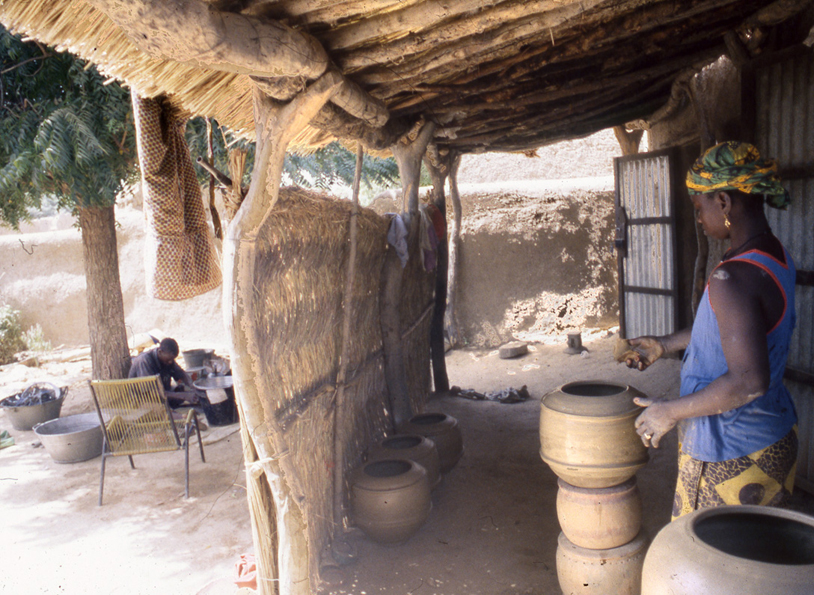
Pottery and Metal Work ||| This woman is finishing a water container. Her husband works nearby making recycled metal pails and basins. Although traditionally the husbands of potters are blacksmiths, in Kalabougou, very few of the men practice their inherited profession due to economic and other factors. Remnants of forges provide evidence that blacksmithing once flourished here.
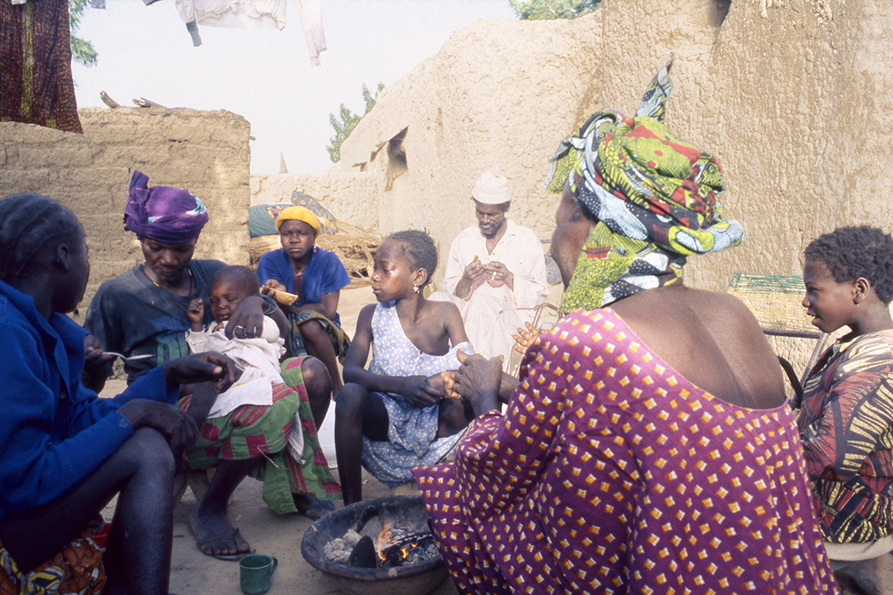
Family Breakfast ||| One January morning, my family in Kalabougou gathered around the ceramic brazier for warmth. The older woman with her back to us is Boh,, the president of the potters and my mother in the village. Alima is giving her infant son Bagardi some medicine while others in the family look on.
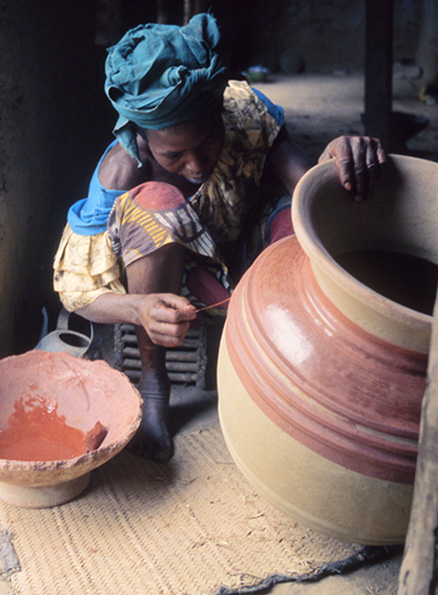
Glazing ||| Red stone slip is applied to the dried pot before firing. The potter is applying a decorative pattern with a feather that has been cut to make a line of the desired thickness. The potters told me that the applied designs were of their own choosing and had no particular meaning. The color is applied to the large areas with a sponge.
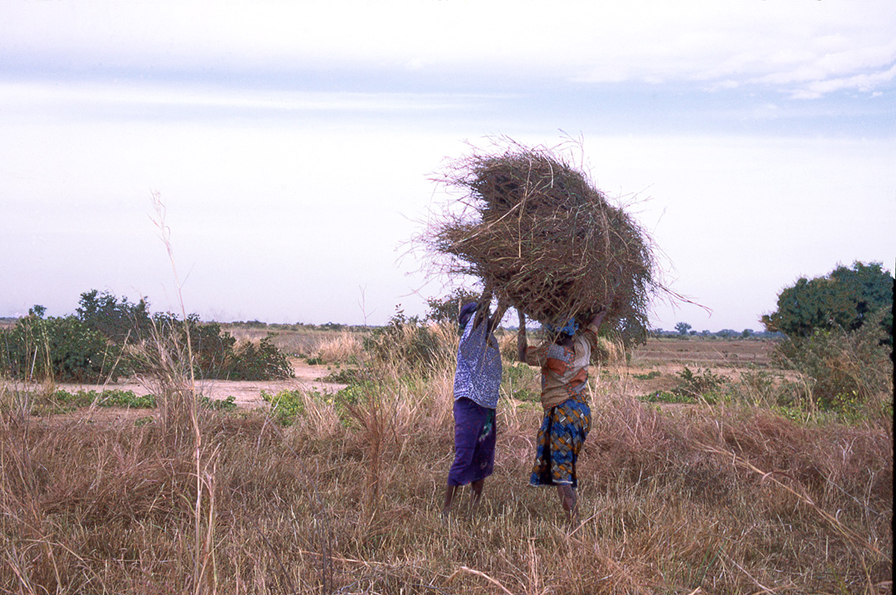
Collecting Grass ||| Women collect grass for the firing in a field a few hundred yards outside the village, cutting it with a small scythe. Handfuls of grass are piled into mounds almost as tall as the woman herself and bound with a rope twisted from the cut grass. With the aid of other women, the completed bundle is then hoisted onto the potter’s head so that she can carry it back to the village.
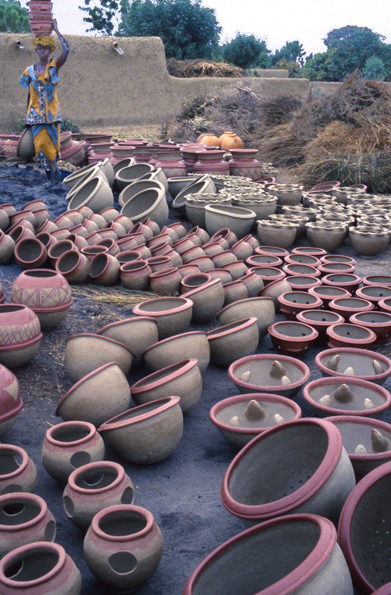
Pots Ready for Firing ||| Firings take place every Saturday and Sunday. By mid-afternoon, the unfired pots are brought to the firing place. This takes many hours. For each trip to the firing place, a woman carries at least two on her head and one in her hand. Visible here are pots for storing water, cooking, carrying embers, and wavy lipped flower pots.
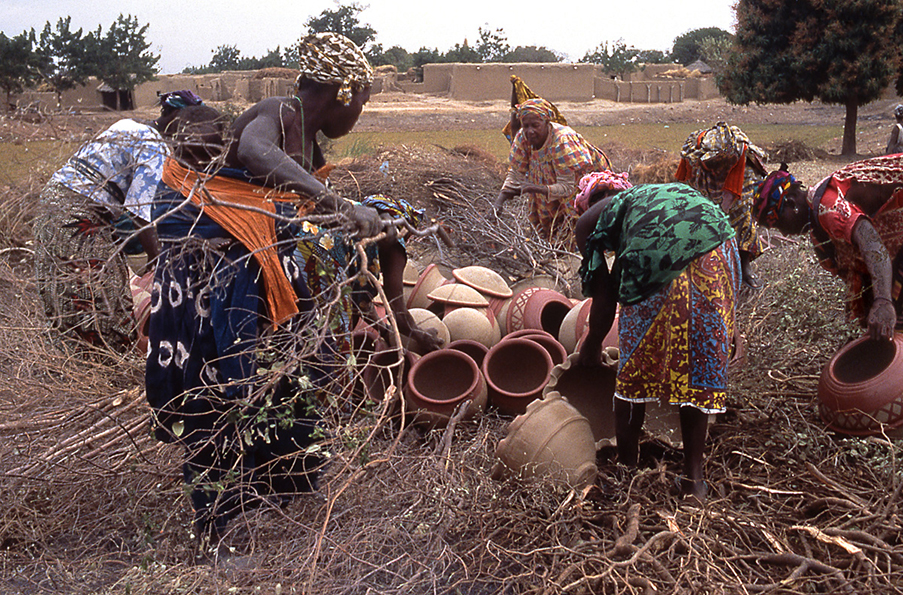
Making the Mounds |||The women construct firing mounds by placing a layer of branches on the ground. The pots are positioned amongst the branches and then grass is piled high to complete the mound. Although the mound contains the pots of many women who are related through their husbands’ extended families, each women tends her own or her immediate family’s pots within the mound.
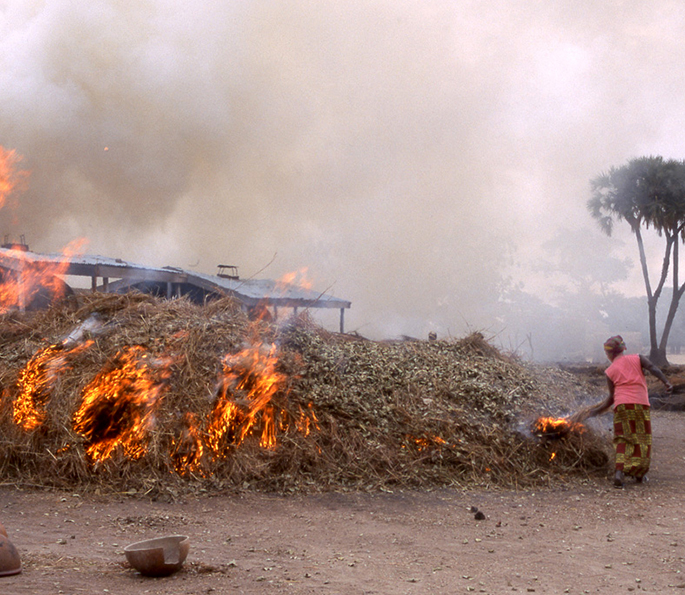
Lighting the Fire ||| When a mound is completed and the ground around has been swept clean of residual combustible material, a senior potter lights the fire. A handful of grass is lit and the woman runs around the circumference of the mound touching the burning torch to the dried grass. Some mounds are still being constructed as others are already burning.
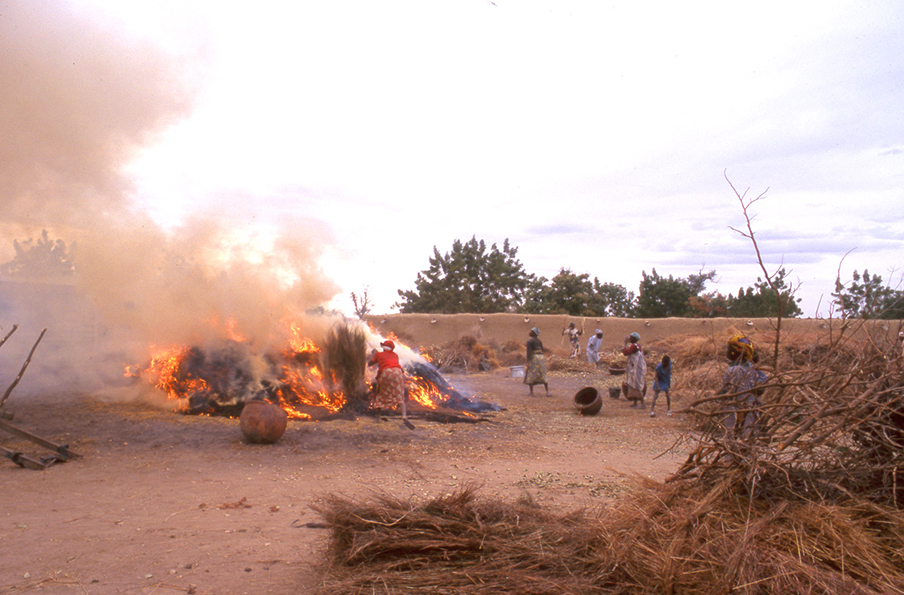
Tending the Fire ||| During the firing, each woman tends her own pots within the mound. The woman in red is throwing more grass on the mound to keep the fire around her pots burning longer. The firing takes about 30 to 40 minutes.
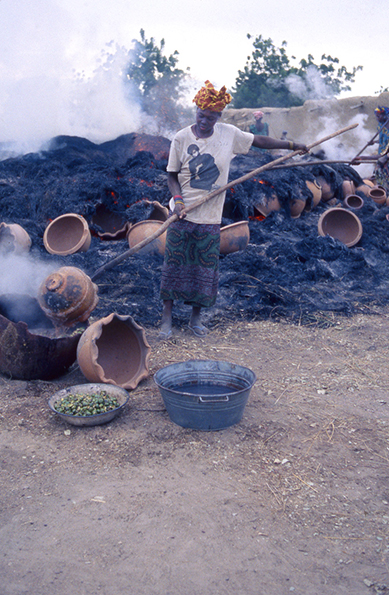
Removing the Pots ||| The vessels are pulled from the still smoldering mound using a long wooden pole with a metal hook. Balanced on the hook, the pot is immersed in a mixture of water and berries that tempers the vessel and adds a reddish finish. The immersed pot makes a tapping noise when it touches the side of the vessel as it is turned on the hook.
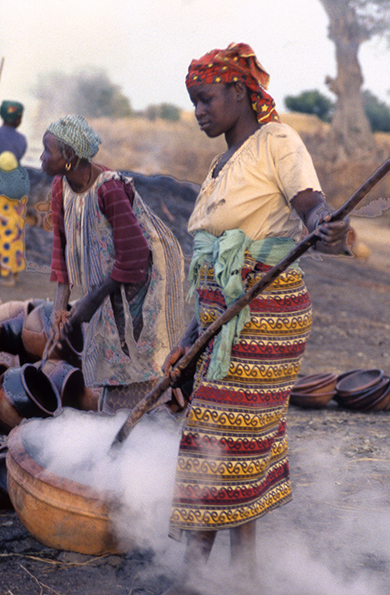
Quenching ||| Steam rises from a burning hot pot that has been immersed in the berry mixture. The older woman behind is picking up a smaller pot with a pair of tongs.

Pots to Market ||| The end of the weekly cycle is the Monday market in Segou. The pots are loaded onto carts at the firing place and brought to the edge of the river where they are transferred to large canoes for transport to market. The potters are being aided by their sons. Many canoes are loaded high with pots each week.
Kalabougou is a village across the Niger River from Segou, Mali. The potters of Kalabougou are major suppliers of pottery to the capital city, Bamako, 150 miles away as well as to Segou. The village dates from the time of the Bamana Empire which thrived in the region from the 17th –19th centuries. There are four quarters in the village each with its own distinct population, one numu (blacksmith), one Somono (fishing people), and two are Bamana farmers. Among the numu traditionally, the women make pottery (numumusow) and the men work with metal and wood.
In 1994, Janet received a Fulbright Fellowship to do research in Mali. As part of her research, she lived in the numuw (blacksmith) quarter of Kalabougou for several months in early 1995. Because her interest was in working with women who make things, she spent time getting to know the potters and their way of life, documenting it in video and still images such as those in the photo essay that follows. Since Janet is not a potter, she didn’t make many pots in Kalabougou. The women work so hard that she couldn’t see adding to their task by asking them to teach her the rudiments of something she was not going to use. Janet has remained in touch with the potters ever since, visiting almost annually. All of the photos presented here were taken in early 1995.
The Women of Kalabougou article published in African Arts Magazine.














